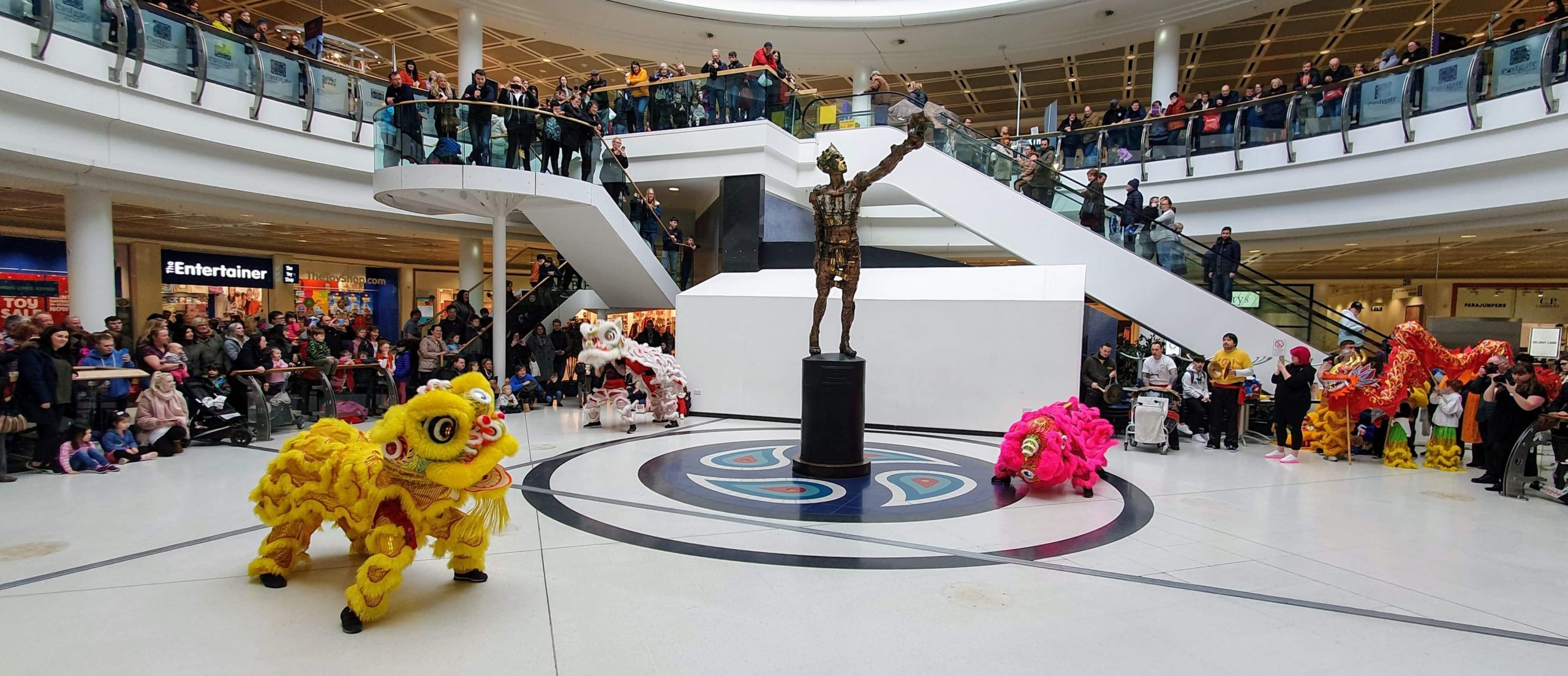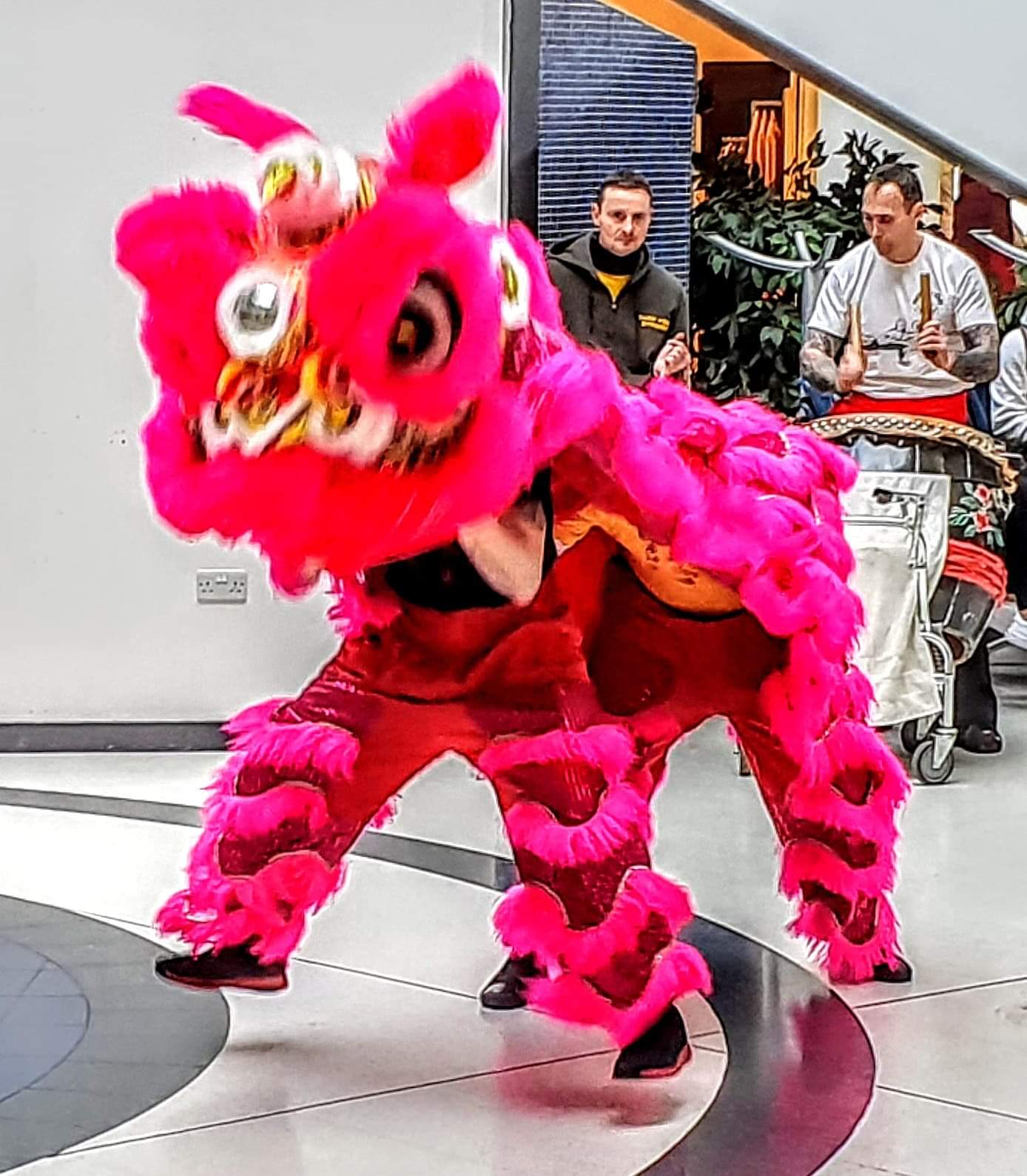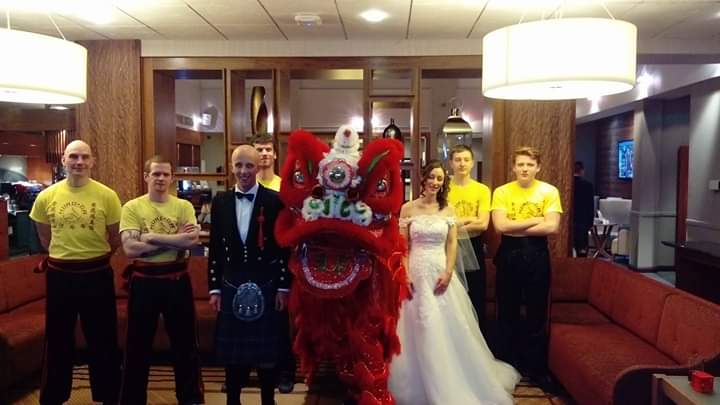
The dust has settled after our Spring Festival/birthday celebrations in Inverness last weekend. We really had a blast but now back to our regular training routine. Our sale has ended but there are still a few bargains in our store. There are updates to our classes for this week and we also have a new branch opening in Forres this week.
Inverness Chinese New Year Celebrations

The Spring Festival, known as Chinese New Year, is a big event in China and many parts of Asia. It is gaining more and more popularity in western countries too. It comes at a time of year when a flash of colour and excitement is much needed to bring us all out of the gloom of Winter. Our celebrations in Inverness definitely did just that. Our troupe is forged from the bond of three separate Yee’s Hung Ga schools that are spread across the North East of Scotland. All three schools descended upon Inverness on the 25th of January to celebrate the Year of the Rat. Our lions performed displays across the city centre. We also performed around 50 traditional ‘Choi Chang’ blessings at retail and business premises. It was a very tiring day for all the students who took part but a hugely successful and enjoyable experience for everyone. You can find out more in our article:
Inverness Chinese New Year Celebrations 2020
We have already announced next years dates. You can find our Facebook event page for it here:
Inverness Chinese New Year Celebrations 2021
Hung
Our sale has now ended. We hope that you managed to grab a bargain while our prices were so low. There are still a few bargains in our Fu-kit Store. Just have a wee browse.

Training Aids
Find our liniments and care kits here.
Classes

Our classes at Yee’s Hung Ga are always open to new students. If you are interested in attending a class, all you need to do is turn up and try your best. We’ll take care of the rest. For more information on starting, see our webpage: How Do I Join? The best classes to start with are as follows:

Kids Class every Monday evening at 6.15pm. If your child is between the ages of 5 and 8, this is the right one for them.
Older Kids class every Thursday at 6.15pm. This is for older kids between the ages of 8 and 13.
Big kids Tuesdays at 7pm. This is for “adults” basically anyone over 13.

Come along and try out a class for free and see how you get on. If it’s not for you, no problem. You don’t need to sign up for regular classes or fill out forms or give us your bank details or any of that stuff. If you like the class, come back for more. If you want to learn, then we want to teach you.

We also have regular classes on Mondays at 7pm for Techniques, drills & applications this is where you learn to develop your skills. Tuesdays at 6.15pm is our Lion Dance class. If you have seen us perform and would like to get involved, come to this class. Thursdays at 7pm is our Traditional Training & Sparring Sessions. It is recommended that you have regularly attended a few classes before you attempt to spar, however the traditional training is open to all students.

We also have private tuition classes available. This week we have slots available all day on Tuesday and also on some evenings. For these, you can easily book and pay for them with our calendar below. Simply select a day and time that suits you best, pop your details in the form and then you’ll be taken to PayPal where you can securely pay for your booking, even if you dont have a PayPal account.
If you would like to discuss any requirements, intentions or ambitions. Please feel free to email us directly.
[CPABC_APPOINTMENT_CALENDAR]Yee’s Hung Ga in Forres

A new branch of Yee’s Hung Ga will open this Friday in Forres. Sifu Hepple is excited to announce the first classes to begin in his hometown of Forres will commence on Friday the 7th of February. There will be two classes every Friday evening starting at 7pm in the swimming pool gym.
The first class from 7-8pm is for 6-12 years old. It is £4 per session.
The 2nd class from 8-9pm is for adults. This is £5 per session.

All are welcome to attend. No experience is necessary. No special equipment, no sign ups, no bank details. Just turn up and we’ll take it from there.
If you are feeling anxious about attending your first class and not sure what to expect. Have a look at our page: How Do I Join? You will find lots of information and it may set your mind at ease.
Coming soon…

Highland School of Qigong
We shall soon be releasing our Winter Qigong Routine notes. This will accompany the routine we developed last year and the workshop which we held in our school. The notes give further information about each exercise and about Qigong practice in general. Don’t miss out, sign up to our email alerts below.
Seminars
We are currently developing a seminar which will be open to anyone interested in Hung Ga. Our seminar will cover techniques, stances & drills for some signature Hung Ga applications. It will be an ideal opportunity to find out, first hand, about the martial art of Hung Ga. Make sure that you are signed up to our email alerts to be the first to find out about this exciting opportunity.































